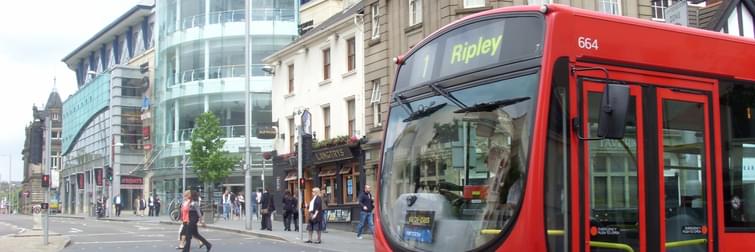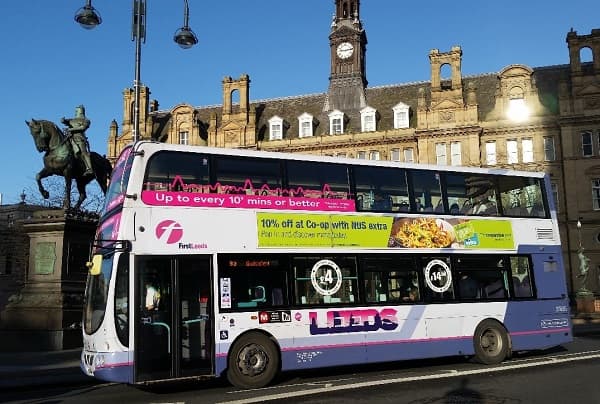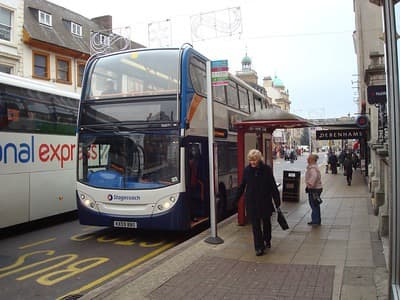
blog: Waiting for the bus to arrive….
Monday 1st June 2020
On the face of it the bus industry is enduring a period of unparalleled challenges – which is not surprising given the announcement from the Transport Minister that it is our ‘civic duty not to use the bus’, and with Number 10 putting out hard hitting campaigns telling the public to avoid using public transport if at all possible.
Of course, there are very good and appropriate public health reasons for making such announcements, but there is a real risk that the messaging that ‘bus is bad’ will stick for a long time to come, so we are going to have to think long and hard about how we build and maintain confidence to attract passengers once this pandemic is over.
However, in amongst this seemingly gloomy picture, it is worth noting that bus companies across the UK have been working incredibly hard and innovatively to maintain essential services, despite passenger numbers almost completely disappearing overnight. To keep things upbeat here are just a few of the positive things that I have spotted from a quick trawl of industry best practice.

Maintaining a core network
This may sound obvious but it’s testament to the dynamic nature of bus operators that they have been able to quickly redesign their networks based on maximum impact for key journeys at least cost. For example, National Express West Midlands is a good example of how they had to take swift action in lockdown, but are now ramping up service frequencies and routes as restrictions begin to be eased.
Offering free travel to essential workers
Cardiff Bus are just one example of an operator shouting loud and proud that they are offering free bus travel to NHS workers during the pandemic. For those supporting our essential workers we salute you!
Offering good practical advice
Those passengers listening to the national headlines might be forgiven for thinking that buses are the most dangerous places on earth. So its great to see NCT offering really clear, simple practical advice on how to safely use the bus during lockdown.
Providing advice on peak crowding
I really like this neat visualising from Trent Barton that allows passengers to see the best times to avoid if they are concerned about overcrowding.
Releasing open data to allow network coverage to be assessed
Hats off to the brilliant work of Passenger for their work in releasing GTFS feeds for many of their bus operator clients. It really helps those of us tasked with visualising network coverage and accessibility to use more progressive and dynamic modelling tools, for example shown here using the Conveyal Analysis tool….
Ramping up cleaning and hygiene procedures
Operators have risen to the challenge of keeping vehicles and waiting facilities extra clean, and with social distancing measures clearly marked. This is no mean feat given the scale of the bus fleet and associated infrastructure, and that they are continuously used by the public. For example, Metrobus have ramped up cleaning schedules and made information publicly available to help build confidence in the services they operate during the epidemic.
Contactless payments
Most operators have shifted from cash to contactless in recent years, and during the pandemic it has become ever more essential to protect both the driver and passenger by ensuring the risk of virus transmission is minimised. Reading Buses are a good example of how cashless payments have become the normal way to pay.
Adopting innovative solutions / demand-led transport / showcasing technology
Stagecoach in Nottinghamshire are using a responsive back office system (Stagecoach Connect), to operate demand-led services in the evening for NHS workers at King’s Mill Hospital. This sort of solution offers a real opportunity during and post-Covid-19 to respond to demand in a way which is most cost effective, building up patronage in a sustainable way to support timetabled services.

Becoming part of the community
Brighton and Hove Buses are just one good example of how time and effort has been redeployed to forge closer links with local communities, offering help and support when needed. This will surely pay dividends in future years as reciprocal good will should see passengers feeling a stronger bond and association with their local bus services.
Much to be admired
So, at a time of significant turmoil and challenge for the bus industry there is much to be admired for the stamina, determination and hard work of those tasked with running and coordinating bus services across the public and private sector. I am sure it will pave the way for a more vibrant network of bus services that will be rebuilt across our towns and cities once we are through the current period of pandemic restrictions.
Jon is Managing Director of ITP and the independent Chair of the Nottingham Bus Quality Partnership. These views are his own.
Image sources:
1 - Passenger Advice, Nottingham City Transport
2 - Best times to catch the bus, Trent Barton
3 - Analysis tool, Conveyal
